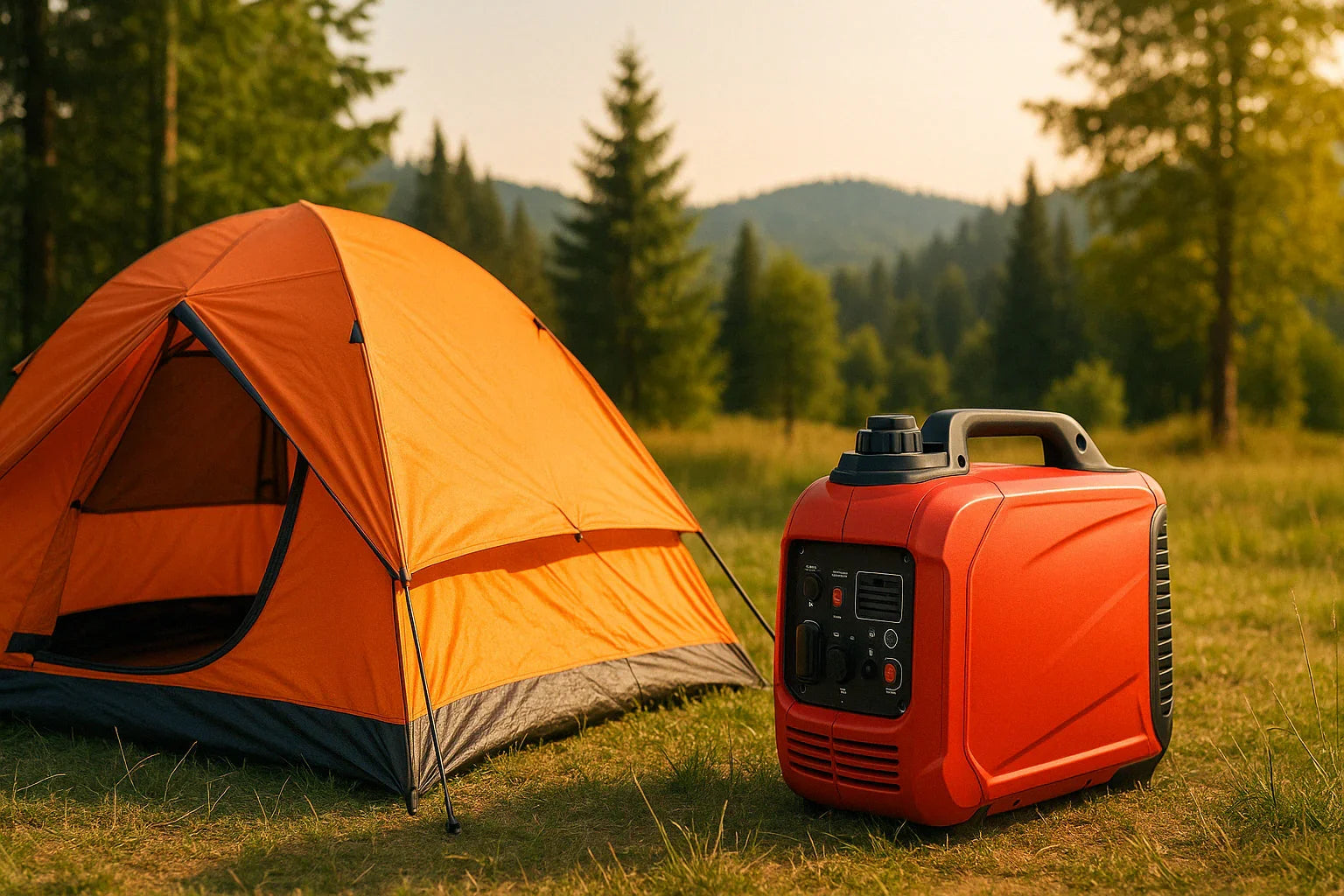Imagine: 72% of campers lose gear power within 24 hours. Phones die, medical devices fail, and food spoils. Portable generators solve this, but not all models perform equally. Here’s why inverter generators dominate and how to choose the best for 2025.
Why Inverter Generators Excel
Silent Operation
Inverter generators run 60% quieter than traditional models. Noise levels below 58 dB avoid disturbing wildlife. Perfect for backcountry camping.
Clean Power
They produce pure sine wave electricity with <3% THD. This protects laptops, drones, and CPAP machines from surges.
Ultra-Portable
Top models weigh under 40 lbs. They’re lighter than most coolers, ideal for mobility.
Three Must-Have Features
Power Precision
Calculate your needs: 500W for essentials or 2,000W+ for luxury camping. Double device wattage for surge demands.
Fuel Efficiency
Gasoline offers high output but is noisy. Propane or dual-fuel runs cleaner, ideal for cold weather. Solar hybrids cut fuel use by 30%.
Stealth Mode
Choose models under 58 dB, quieter than rainfall. This complies with campground noise rules.
Fact: Mismatched generators triple mid-trip failures. Pick wisely to stay powered!
Why Choose Inverter Generators?
Traditional generators deliver unstable power, risking damage to electronics. Camping generators produce clean, household-like electricity. They’re ideal for:
Charging phones, tablets, and cameras safely.
Running CPAP machines reliably.
Powering mini-fridges and LED lights efficiently.
Most operate below 60 dB, quieter than conversation. Your campsite neighbors will thank you.For detailed comparisons, see Inverter Generator vs. Traditional.
How to Choose the Best Camping Generator in 2025
Camping demands reliable power. Inverter generators are compact, fuel-efficient, and quiet. With brands like ERAYAK, Westinghouse, Champion, and WEN, picking the right one is key. As a gear tester with a decade of experience, I’ve evaluated dozens in real-world scenarios. Here’s your guide.
Key Features to Consider
1. Power Output & Runtime
Match wattage to your needs:
1,000–2,000W (e.g., ERAYAK 1000iN, Westinghouse iGen2200)
Best for: Phones, LED lights, small coolers.
Runtime: 8–12 hours on ECO mode.
2,000–3,500W (e.g., ERAYAK 2400P, Champion 3500W)
Handles: Coffee makers, microwaves, portable ACs.
Runtime: 8–10 hours at 50% load.
3,500W+ (e.g., ERAYAK 4500PD, Westinghouse iGen5000F)
Powers: Large appliances, RV setups.
Runtime: 10 hours at 50% load.
| Model | Rated Power | Noise | Fuel Type | Weight | Features |
| ERAYAK 1000iN | 1000W | 52dBA | Gasoline | 22 lb | CO Sensor, ECO Mode |
| Westinghouse iGen2200 | 1800W | 52dBA | Gasoline | 47.5 lb | Parallel-Ready, ECO Mode |
| ERAYAK 2400P | 2000W | 52dBA | Gasoline | 42 lb | ECO Mode |
| Champion 3500W | 2300W | 58dBA | Gasoline | 57.8 lb | Parallel Kit, CO Shield |
| WEN 3800 | 3400W | 60dBA | Gasoline | 99.2 lb | ECO Mode, Parallel Kit |
| ERAYAK 4500PD | 3500W | 58dBA | Tri-Fuel | 54 lb | Parallel Kit, CO Shield |
| Westinghouse iGen5000F | 3900W | 58dBA | Dual Fuel | 111 lb | Remote Start, Parallel Capable |
2. Fuel Type & Efficiency
Gasoline: Widely available, less efficient in cold.
Propane/Dual-Fuel: Cleaner, better for high altitudes.
Tri-Fuel: ERAYAK 4500PD switches fuels automatically. Great for long trips.
3. Noise & Portability
Look for:
50–60 dB, like a dishwasher.
Weight under 50 lbs for portability. ERAYAK 1000iN and Westinghouse iGen2200 excel at 52 dB.
4. Safety & Smart Features
Low-oil shutdown prevents engine damage.
CO detection ensures safety in enclosed spaces.
USB/12V ports simplify charging.
Bluetooth monitoring tracks fuel remotely.
Top Picks for 2025
Best Budget: ERAYAK 2400P (2000W)
Pros: Affordable, lightweight (42 lbs), quiet (52 dBA).
Cons: Gasoline-only, no paralleling.
Link: ERAYAK Official
Best for RV: Champion 3500W Dual Fuel
Pros: Powerful, propane/gasoline, remote start.
Cons: Heavy (57.8 lbs), pricier.
Link: Champion Power Equipment
Best for Backpacking: ERAYAK 1000iN (1000W)
Pros: Ultralight (22 lbs), quiet (52 dBA), USB-C.
Cons: Limited to small devices.
Link: ERAYAK Official
Best for Off-Grid: Westinghouse iGen5000F
Pros: Long runtime, clean energy.
Cons: Bulky (111 lbs), expensive.
Link: Westinghouse Outdoor Power
Final Tips
A quality camping generator keeps your trip powered. Check deals at ERAYAK or Westinghouse. Verify campground rules at National Park Service before traveling. Questions? I test these units year-round—ask away!
